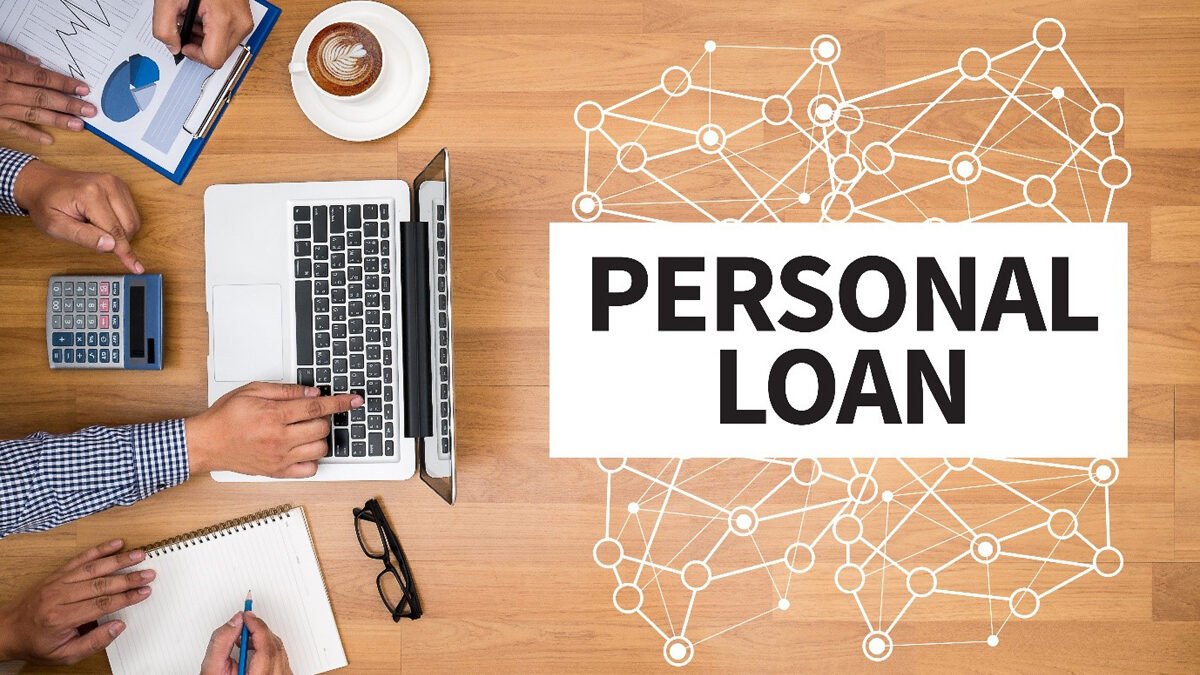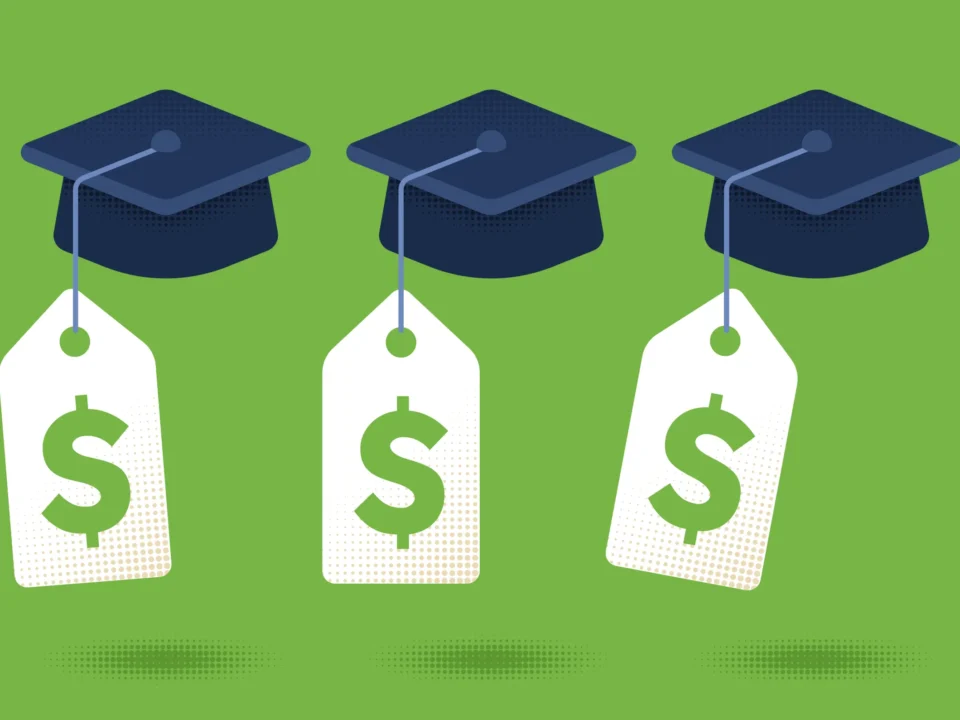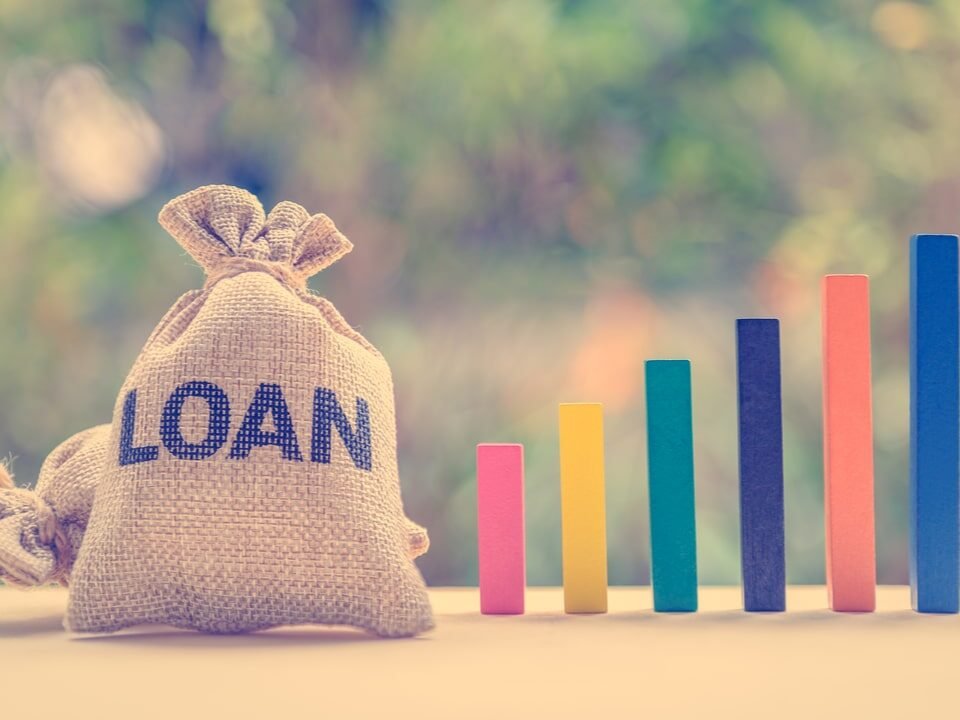
How to Pay Student Loan When Self-Employed: A Guide
October 8, 2025
Is a Debt Consolidation Loan a Good Idea in California?
October 11, 2025How to Get a Personal Loan with Bad Credit in Ohio
Understanding Bad Credit and Personal Loans
Bad credit is generally defined as having a low credit score, which signals to lenders that a borrower may pose a higher risk in repayment of loans. Credit scores typically range from 300 to 850, with scores below 580 regarded as poor or bad credit. These scores are calculated based on several factors including payment history, credit utilization rate, length of credit history, types of credit accounts, and recent credit inquiries. Each element plays a significant role in determining how lenders perceive an individual’s financial reliability.
The implications of having a low credit score when applying for loans can be substantial. Borrowers with bad credit may face challenges such as higher interest rates, larger down payment requirements, or outright denial of their loan applications. This can be particularly concerning for those who are in urgent need of funds and are wondering how to get a personal loan with bad credit. Understanding these pitfalls is crucial for borrowers to navigate the lending landscape effectively.
There are various types of personal loans available, each catering to different financial needs. For instance, secured loans require collateral, typically offering better terms for those with poor credit. Unsecured loans, on the other hand, do not require any backing and can be more challenging to obtain with bad credit but are often more accessible than traditional bank loans. Lenders who specialize in bad credit loans may employ alternative criteria for evaluating applications, thus opening up options for individuals looking for financial assistance.
It is essential to approach this process with a clear understanding of what lenders consider when reviewing applications. Gaining insight into how to get a personal loan with bad credit can empower individuals to make informed decisions, improve their financial circumstances, and work towards rebuilding their credit. Education and preparation are fundamental steps in this journey.
Assessing Your Financial Situation
Before you embark on the journey of applying for a personal loan with bad credit, it is essential to first assess your financial situation thoroughly. Understanding your financial health is a crucial step in determining whether you can manage additional debt and how much you can afford to borrow. Begin by evaluating your monthly income, which includes not only your salary but also any additional sources of revenue, such as freelance work or rental income.
Next, take a closer look at your existing debt. Compile a detailed list of all your current obligations: credit card debt, auto loans, student loans, and any other repayments. This information is vital as it will help you calculate your debt-to-income (DTI) ratio, a significant factor lenders consider when assessing loan applications, especially for individuals with bad credit. A DTI ratio above 40% may hinder your chances of approval for a personal loan.
Furthermore, it is important to analyze your overall borrowing needs. Reflect on the purpose of the loan and how much money you genuinely require. This careful consideration prevents you from borrowing more than necessary, which can lead to additional financial strain. Alongside identifying your needs, creating a budget is pivotal in understanding your capacity to make monthly payments. A well-structured budget outlines your income and expenses, allowing you to better visualize the portion of your income that can be allocated towards repayments.
Establishing a clear understanding of your financial situation is not just about assessing current debts and income; it also involves preparing for the financial commitment that a personal loan entails. By considering these factors, you are taking an essential step on how to get a personal loan with bad credit in Ohio while positioning yourself for better loan terms and managing your financial future responsibly.
Researching Lenders in Ohio
When navigating the landscape of personal loans, particularly when seeking how to get a personal loan with bad credit in Ohio, thorough research on potential lenders is crucial. The objective is to identify lenders willing to extend credit despite your credit history. In Ohio, you can encounter various types of lenders, each offering distinct terms and conditions.
Firstly, consider traditional banks. While many banks typically have stricter lending criteria, some may offer personal loans to individuals with less-than-perfect credit. It is beneficial to contact local banks to inquire about any specific programs or products aimed at borrowers with bad credit. Additionally, building a relationship with a local bank can sometimes improve your chances of obtaining a loan, as they often value long-term customers.
Another viable option is credit unions. Credit unions tend to be more community-oriented and often provide more favorable terms and lower interest rates compared to traditional banks. They may also have a more lenient attitude towards applicants with bad credit. Joining a local credit union can be advantageous, as they may offer tailored loans that consider your unique financial circumstances.
Online lenders have also emerged as a popular choice for borrowers with bad credit. These digital platforms generally offer a streamlined application process and quicker funding times. It is essential to compare several online lenders, as terms, fees, and interest rates can vary widely. When evaluating online lenders, look for those that specialize in bad credit lending and read reviews to gain insights into customer experiences.
In conclusion, to successfully navigate how to get a personal loan with bad credit in Ohio, it’s imperative to thoroughly research and evaluate various lenders, including banks, credit unions, and online platforms. Identifying the lender that best aligns with your needs can significantly enhance your chances of securing the financing necessary for your situation.
Gathering Required Documentation
When embarking on the journey of securing a personal loan, particularly for those with bad credit, it is crucial to gather the necessary documentation ahead of time. This proactive approach not only simplifies the loan application process but also enhances the chances of approval. Understanding how to get a personal loan with bad credit requires awareness of what lenders typically request during the evaluation.
First and foremost, proof of income is essential. Borrowers should be prepared to present recent pay stubs, bank statements, or tax returns. These documents demonstrate financial stability and the ability to repay the loan. Given that individuals with bad credit may have a limited financial history, showing consistent income will be particularly important.
Identification is another key component of the documentation process. Applicants will need to provide a valid government-issued identification, such as a driver’s license or passport. This helps lenders verify the applicant’s identity, which is a standard requirement regardless of credit history.
Credit history is also an important document that lenders will consider. Applicants should be transparent regarding their credit score and any outstanding debts. Obtaining a credit report prior to applying can equip borrowers with the information they need to discuss their circumstances candidly, which can help in negotiating better loan terms.
Additionally, it is advisable to gather personal information, such as social security numbers and current addresses. This information is typically required on loan applications, and having it ready can expedite the process. Lastly, some lenders may ask for collateral or a co-signer, which can be beneficial for individuals with bad credit, as it reduces the lender’s risk.
In essence, being prepared and organized with all required documentation can significantly aid anyone looking to understand how to get a personal loan with bad credit in Ohio and can streamline the application process.
Consider Secured Vs Unsecured Loans
When exploring options for obtaining financing, individuals with bad credit should carefully evaluate the choice between secured and unsecured personal loans. Understanding the fundamental differences between these two loan types is essential for determining what may work best in their particular situation.
Secured loans require borrowers to provide collateral, such as a car, savings account, or real estate. By pledging an asset, borrowers can mitigate the lender’s risk, which often results in more favorable loan terms, such as lower interest rates and increased borrowing limits. This makes secured loans an attractive option for those who can offer collateral, as lenders may be more willing to approve applications from individuals with poor credit histories. However, it is significant to consider that, in the event of default, the lender has the right to seize the collateral to recover their losses, which poses a risk for borrowers.
On the other hand, unsecured loans do not require collateral, which can provide peace of mind as borrowers are not at risk of losing their assets. However, lenders may impose stricter qualification criteria and higher interest rates on unsecured loans, particularly for those with bad credit. The absence of collateral makes these loans higher risk for lenders, which can lead to more challenging approval processes. Borrowers may also face shorter repayment terms or smaller loan amounts with unsecured personal loans, complicating the decision for those in need of flexible financing options.
In summary, when considering how to get a personal loan with bad credit in Ohio, it is crucial to weigh the pros and cons of secured versus unsecured loans. Individuals should assess their financial situation and ability to provide collateral, as this decision can significantly impact both the loan approval process and the overall borrowing experience.
Improving Your Chances of Approval
Securing a personal loan can be challenging, particularly if you are wondering how to get a personal loan with bad credit. However, there are several practical strategies you can employ to enhance your chances of approval. These strategies aim to empower borrowers by increasing their attractiveness to lenders.
First and foremost, improving your credit score is a vital step. While it may not be feasible to achieve a perfect score immediately, even small improvements can have a significant impact. You can start by checking your credit report for errors and disputing any inaccuracies. Additionally, paying down high credit card balances and making payments on time can positively affect your score over time. This is a crucial element in the process in Ohio, as lenders often evaluate credit scores as a primary factor in their decision-making.
Alternatively, consider applying for the loan with a co-signer. A co-signer is someone with better credit who agrees to take responsibility for the loan if you default. Having a co-signer not only reassures the lender but can also lead to better loan terms and lower interest rates. It is essential to choose someone who trusts your repayment capability, as this relationship could be affected should repayment issues arise.
Another option to consider is adjusting your loan amount. Requesting a smaller loan may improve your chances of receiving approval. Lenders often prefer to lend smaller amounts to borrowers with bad credit, as it reduces their risk. Calculate your essential financial needs carefully to ensure that you only apply for the required amount, which can help streamline the process.
By implementing these strategies, you can effectively enhance your chances of obtaining a personal loan, even with bad credit. With diligent preparation and an understanding of what lenders value, you will be better positioned to secure the financing you need.
Understanding Loan Terms and Conditions
When considering how to get a personal loan with bad credit, it is crucial to familiarize oneself with the common terms and conditions that govern these loans. Personal loans often come with various financial features that borrowers need to understand in order to make informed decisions. Key among these are interest rates, repayment terms, and associated fees, all of which can significantly impact the overall cost of the loan.
Interest rates represent the cost of borrowing funds and can vary greatly, especially for those with poor credit histories. Lenders generally perceive high-risk borrowers as less likely to repay the loan, resulting in higher interest rates as a compensatory mechanism. Therefore, when exploring how to get a personal loan with bad credit, it is essential to shop around and compare rates from multiple lenders to find the most favorable terms possible.
Repayment terms outline how and when the borrower is expected to pay back the loan. These can range from a few months to several years, and a longer repayment period typically means smaller monthly payments, but increased total interest paid over time. Conversely, a shorter loan term can lead to higher monthly payments, but less interest paid overall. Borrowers should assess their financial stability and potential changes in income when deciding on the repayment period.
Additionally, fees associated with personal loans can dramatically affect the total cost. Origination fees, late payment fees, and prepayment penalties are common and can increase the expense of borrowing. Therefore, understanding these fees and factors is essential. For borrowers asking how to get a personal loan with bad credit and process in Ohio, a thorough reading of the loan agreement and clear communication with lenders is advisable to avoid any costly pitfalls.
The Application Process Explained
When exploring how to get a personal loan with bad credit in Ohio, it is essential to understand the application process thoroughly. The steps involved can significantly influence your likelihood of approval and the efficiency with which you receive your funds. The journey typically begins with researching lenders who specialize in offerings for individuals with subpar credit scores. It’s advisable to compare interest rates, terms, and any additional fees associated with these loans.
Once you have identified suitable lenders, the application process begins. Most lenders provide an online application form that generally requires personal information such as your name, address, social security number, income, and employment details. Additionally, be prepared to outline your financial obligations to give the lender a clear picture of your financial situation. This is especially crucial when addressing the question of how to get a personal loan with bad credit.
After completing the application, you will need to submit various documentation to support your claims. This may include pay stubs, bank statements, proof of residence, and any other documentation the lender might request to substantiate your income and expenditures. It’s advisable to have these documents ready and organized to expedite the review process.
Once your application and all supporting documents are submitted, there may be a waiting period during which the lender conducts their assessment. They will evaluate your financial situation and creditworthiness, which might take anywhere from a few hours to several days, depending on the lender’s policies. During this time, it is usually prudent to refrain from applying for additional loans, as multiple inquiries can negatively impact your credit score.
After You Get the Loan: Managing Your Debt Wisely
Securing a personal loan with bad credit can be a challenge, but understanding how to manage that loan effectively is crucial to improving your financial situation. One of the first steps to take after receiving your loan is to set a strict repayment schedule. This ensures that you make timely payments, which is essential for maintaining a positive credit history. Missing payments can not only lead to additional fees but can also further damage your credit score, making it even harder to secure financing in the future.
Another effective strategy for managing your personal loan is to consider implementing a budget that accommodates your new payment obligations. Review your monthly expenses and identify areas where you can cut back, allowing you to allocate more resources toward paying off your loan. This disciplined approach not only helps in managing your current debt but also fosters healthy financial habits that are beneficial in the long run.
To expedite the repayment process, think about making extra payments towards the principal when possible. Even a small additional amount can significantly reduce the interest paid over time and shorten the overall loan term. Additionally, if you receive a tax refund or a bonus at work, using a portion of that money to pay down your loan can be a wise financial decision.
Also, be wary of falling back into the cycle of bad credit. Establishing an emergency fund can provide a financial cushion that prevents you from relying on credit cards or additional loans during unforeseen circumstances. This proactive measure will not only protect your credit score but also instill a sense of financial stability.
In conclusion, effectively managing your personal loan involves timely payments, budgeting, making additional contributions when possible, and safeguarding against future credit issues. By adopting these strategies, you can navigate the complexities of borrowing and work toward improving your overall credit situation.
Frequently Asked Questions: Personal Loans with Bad Credit in Ohio
1. Can I get a personal loan in Ohio with bad credit?
Yes, many lenders in Ohio offer personal loans to individuals with bad credit. Options include online lenders, credit unions, and community-based organizations. However, be prepared for higher interest rates and possibly stricter terms.
2. What are my options for bad credit loans in Ohio?
You have several options:
-
Online Installment Loans: Platforms like Acorn Finance allow you to compare offers from multiple lenders without affecting your credit score.
-
Credit Unions: Local institutions such as KEMBA Financial Credit Union offer personal loans with competitive rates, especially if you’re a member.
-
Community Organizations: The Hebrew Free Loan Association of Northeast Ohio provides interest-free loans to those in need.
3. What credit score do I need to qualify?
While requirements vary, many lenders consider a credit score of 600 or higher. Some platforms, like Acorn Finance, work with lenders who may approve loans for those with scores below 600.
4. How can I improve my chances of approval?
-
Apply with a Co-Signer: Having someone with better credit can increase your chances.
-
Provide Collateral: Secured loans, backed by assets like a car, may be easier to obtain.
-
Show Proof of Income: Demonstrating a steady income can reassure lenders of your ability to repay.
-
Limit Debt-to-Income Ratio: Lenders often prefer a DTI ratio below 50%.
5. Are there any risks involved?
Yes, be cautious of:
-
Predatory Lenders: Some may charge exorbitant fees or interest rates.
-
Advance Fee Scams: Legitimate lenders don’t require upfront payments.
-
Unsecured Loans: Without collateral, you risk higher interest rates and potential debt.
6. How can I avoid scams?
-
Research Lenders: Check reviews and verify credentials.
-
Avoid Upfront Fees: Be wary of lenders requesting payment before disbursing funds.
-
Secure Websites: Ensure the lender’s website uses HTTPS for secure transactions.
7. How do I apply for a loan?
-
Online Platforms: Use services like Acorn Finance to compare offers.
-
Credit Unions: Visit local branches or apply online if you’re a member.
-
Community Organizations: Contact institutions like the Hebrew Free Loan Association for interest-free options.
8. What documents will I need?
Typically, lenders will ask for:
-
Proof of Identity: Driver’s license or passport.
-
Proof of Income: Pay stubs or bank statements.
-
Proof of Address: Utility bills or lease agreements.
-
Credit History: Some lenders may perform a soft or hard credit check.
Read More:
- How to Pay Student Loan When Self-Employed: A Guide
- Oportun vs LendingClub: Which Company Offers the Better Loan Option?
- What credit score do you need for an RV loans in California
- Subsidized vs Unsubsidized Loans: What’s the Difference?
- Understanding Loans Based on Financial Need in the USA: Types and Options




